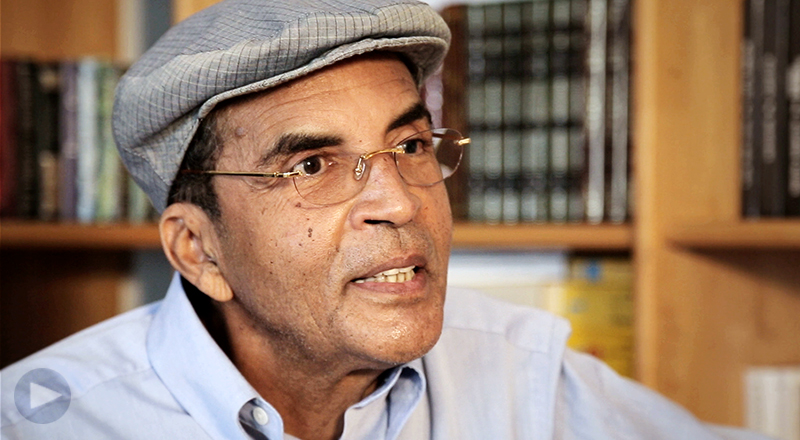
The Libyan Tuareg novelist and short story writer Ibrahim al-Koni is one of the most original and innovative authors writing in Arabic. Born in 1948 in Fezzan Region, near the Libyan desert city of Gadames, Ibrahim al-Koni was brought up on the tradition of the Tuareg, popularly known as "the veiled men" or "the blue men." Mythological elements, spiritual quest and existential questions mingle in the writings of al-Koni who has been hailed as magical realist, Sufi fabulist and poetic novelist. He spent his childhood in the desert and learned to read and write Arabic when he was twelve. Al-Koni studied comparative literature at the Maxim Gorky Literature Institute in Moscow and then worked as a journalist and editor at a cultural magazine in Moscow and Warsaw, before moving to Switzerland. He has won numerous awards and important literary prizes - including the Mohamed Zefzaf Prize for the Arabic Novel in 2005 and the 2008 Sheikh Zayed Award for Literature - and his many books have been translated into 35 languages. In 2015, Al-Koni was shortlisted for the Man Booker International Prize. His novel Gold Dust (first published in Arabic in 1990 as al-Tibr) appeared in Georgian in 2016. Another novel “The Bleeding of the Stone” was published in Georgian in 2107.
Gold Dust
(Excerpt)
Without hearing an answer to his prayers, Ukhayyad secured himself within the impregnable rock. He blocked up the mouth of the crevice with rocks, and squeezed his body into his new jail. He entered it in the evening and slept sitting — knees bent to chest.
It was only in the morning that he noticed the colorful drawings of the ancients. The towering walls were covered with them. To his right, a herd of buffalo spread out across a field, grazing at their leisure — some of their heads bent to the ground as they crop the grass, another group raises their heads lazily, giving the impression they are chewing on cud. To his left, the ancient sorcerers had carved an enchanting scene. A group of herdsmen chase a moufflon crowned with enormous horns. The animal runs toward a distant mountain. Some of the hunters wield spears, while others shoot with bows at their prey.
It was hard to divine the outcome of the hunt: the distance between the moufflon and the hunters does not suggest that he will get away, despite the mountain that lies at the end of his path. The painter had drawn the mountain on the horizon so as to place hope before the poor moufflon. The mountain is its sole hope for salvation. The animal knows this — and hastens with all his strength. It is clear that the moufflon is exhausted, his outline shows that. The animal’s figure is heavy, yet he somehow derives strength from the unknown — the unknown that drives creation to love life. The hunters also know that he will escape if he takes refuge in the mountain — and their pursuit intensifies. They aim their spears and arrows so very precisely, yet the moufflon remains unscathed. Despite all this, there is little chance that the animal will escape.
Ukhayyad did not know how he was so sure that the moufflon would perish. He could not understand how the sorcerer artist had been able to impart that disturbing conclusion. Nor did he know why this revelation made him feel so despondent.shaykhs in their fervor and ecstasy.
translated by Elliott Colla

